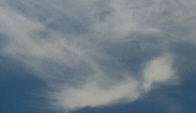Multiple Choice
Identify the
choice that best completes the statement or answers the question.
|
|
|
1.
|
Sandstone is a rock that has been formed by the cementing and compaction of
sand, which type of rock classification is correct?
a. | sedimentary | c. | metamorphic | b. | igenous | d. | sediment |
|
|
|
2.
|
Which type of rocks would you find the most of on the surface of a
volcano?
a. | sedimentary | c. | metamorphic | b. | igneous | d. | magma |
|
|
|
3.
|
Identify the rock type that is created by heat and pressure
a. | metamorphic | c. | sedimentary | b. | igneous | d. | sediments |
|
|
|
4.
|
Alfred Wegener came up with a theory explaining the movement of continents
a. | Continental Drift | c. | Seismic Drift | b. | Plate Tectonics | d. | Continental
Tectonics |
|
|
|
5.
|
The idea of continental drift says that:
a. | continents are moveable if we have the correct force | c. | plates containing the continents
drift on magma and move over time | b. | sailors are aware that drifting will still
allow you to go from continent to continent | d. | continents are moving due to population shifts |
|
|
|
6.
|
Basically, the process of _________ is breaking things down.
a. | destruction | c. | weathering | b. | erosion | d. | demolition |
|
|
|
7.
|
If ice seeps into a road and freezes, it will break the asphalt down and leave a
pot hole. What type of weathering is this?
a. | wind | c. | mechanical | b. | chemical | d. | water |
|
|
|
8.
|
If we see tiny pieces of a mountain flowing down the slope to the bottom, we are
witnessing:
a. | weathering | c. | mechanical | b. | water | d. | erosion |
|
|
|
9.
|
The sandbar that is created at the bend of a river is an example of what type of
erosion?
a. | mechanical | c. | water | b. | wind | d. | chemical |
|
|
|
10.
|
Which weathering force creates “V” shaped valleys
a. | water | c. | gravity | b. | wind | d. | erosion |
|
|
|
11.
|
If water gets inside a rock and “rusts” the iron particles within
the rock causing it to fall apart, what type of weathering would that be?
a. | gravity | c. | water | b. | erosion | d. | chemical |
|
|
|
12.
|
Igneous rocks come from :
a. | cementing | c. | molten (melted) rock | b. | extreme pressure | d. | compaction |
|
|
|
13.
|
When erosion carries bits of dirt to the lowest level of the Earth and it sits
there under many layers for many millions of years, it forms _______ rocks.
a. | igneous | c. | metamorphic | b. | sedimentary |
|
|
|
14.
|
Which force below is important to forming metamorphic rocks?
a. | water | c. | melting | b. | cementing and compaction | d. | heat and
pressure |
|
|
|
15.
|
Great heat and pressure is needed to create which type of rock?
a. | igneous | c. | sedimentary | b. | metamorphic |
|
|
|
16.
|
Which type of cloud is very high in the sky and formed mostly from ice
crystals. They are wispy, and light passes through them easily?
a. | cirrus | c. | altocumulus | b. | stratus | d. | cumulus |
|
|
|
17.
|
What type of cloud looks like a large, puffy cotton ball and often are the ones
that produce summer thunder storms?
a. | cirrus | c. | altocumulus | b. | stratus | d. | cumulus |
|
|
|
18.
|
What type of cloud looks like a blanket stretched out across the sky in a thin
layer?
a. | cirrus | c. | altocumulus | b. | stratus | d. | cumulus |
|
|
|
19.
|
This cloud type will produce?  a. | no rain | c. | a lot of rain | b. | a little rain | d. | flooding |
|
|
|
20.
|
This cloud type will produce?  a. | no rain | c. | lots of rain | b. | a little rain |
|


